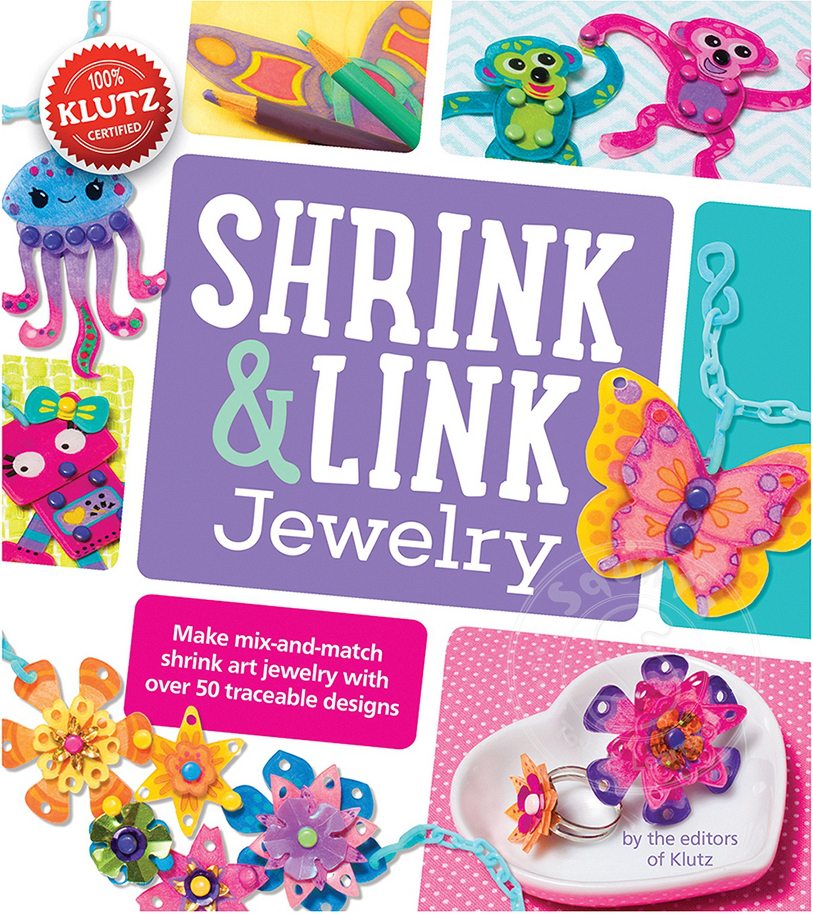The age of heroes is a thing of the past. How can modern Orcs release their rage and display courage without creating massive carnage with sword and axe? Whatever puny human once said the pen is mightier than the sword may have been onto something. The boardroom can be just as challenging and dangerous as the battlefield. Outbid your competition in auctions to buy companies or consider supporting startups. Then look for opportunities to backstab your opposition with industries rather than a dagger. Welcome to the world of Orconomics.
What Is Orconomics?
Orconomics is a tabletop game of business for 2-5 players, ages 10 and up, and takes about 60 minutes to play. It’s currently seeking funding on Kickstarter, with a pledge level of $49 for a Premium edition of the game. This Kickstarter edition contains 50 orc corporate building miniatures that will not be included in the retail version. It is also the second edition of the game, but the first edition to be released in English. The previous edition was available only in Russian. Orconomics was designed by Fyodor Korzhenkov and Timofey Bokarev and published by Ares Games, with illustrations by Anton Kvasovarov and Anastasia Mazeina.
New to Kickstarter? Check out our crowdfunding primer.
Orconomics Components
Note: My review is based on a prototype copy, so it is subject to change and may not reflect final component quality.
Here is what you get in the box:
- 50 Orc corporate buildings in 5 different colors (Kickstarter exclusive)
- 1 game board with center piece and 10 industry segments
- 40 industry cards
- 16 quest cards
- 50 company tokens
- 80 skull tokens (50 silver, 30 gold)
- 1 activity token
- 1 crisis token
- 1 oracle token
- 2 forecast dice
- 5 player reference cards

The game board is created each time you play with the 10 industry sectors surrounding the center piece. For the first time you play, put the sectors in numerical order. However after that, mix them up and place them randomly for different experiences.

Industry cards are used to place or promote startups as well as to play their industry ability. Using them wisely is the key to victory.
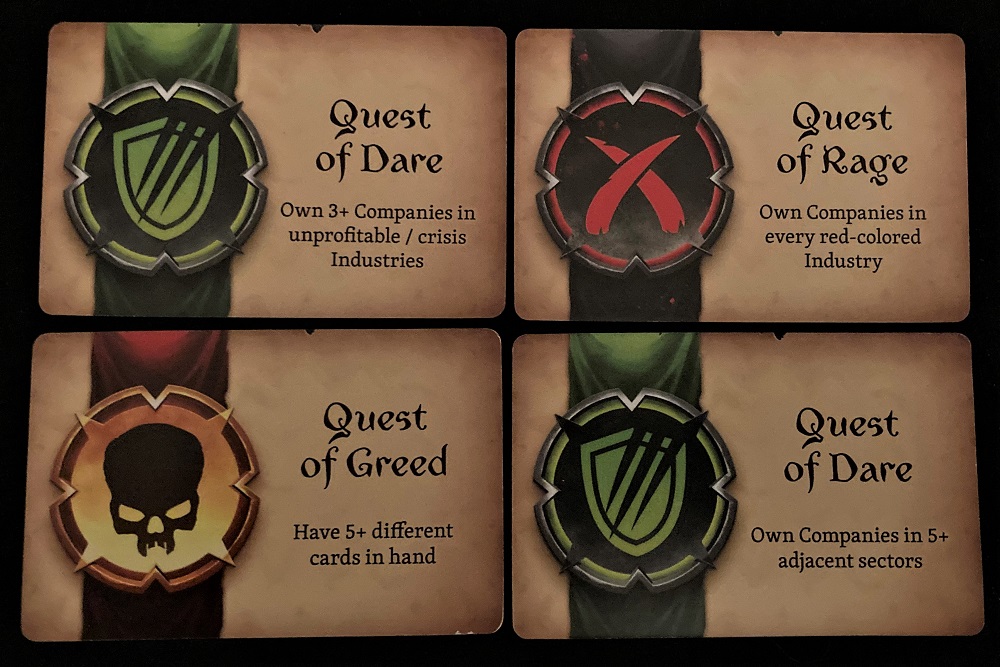
Quest cards can be earned by completing the requirement listed on them. They count at 1 victory point each.
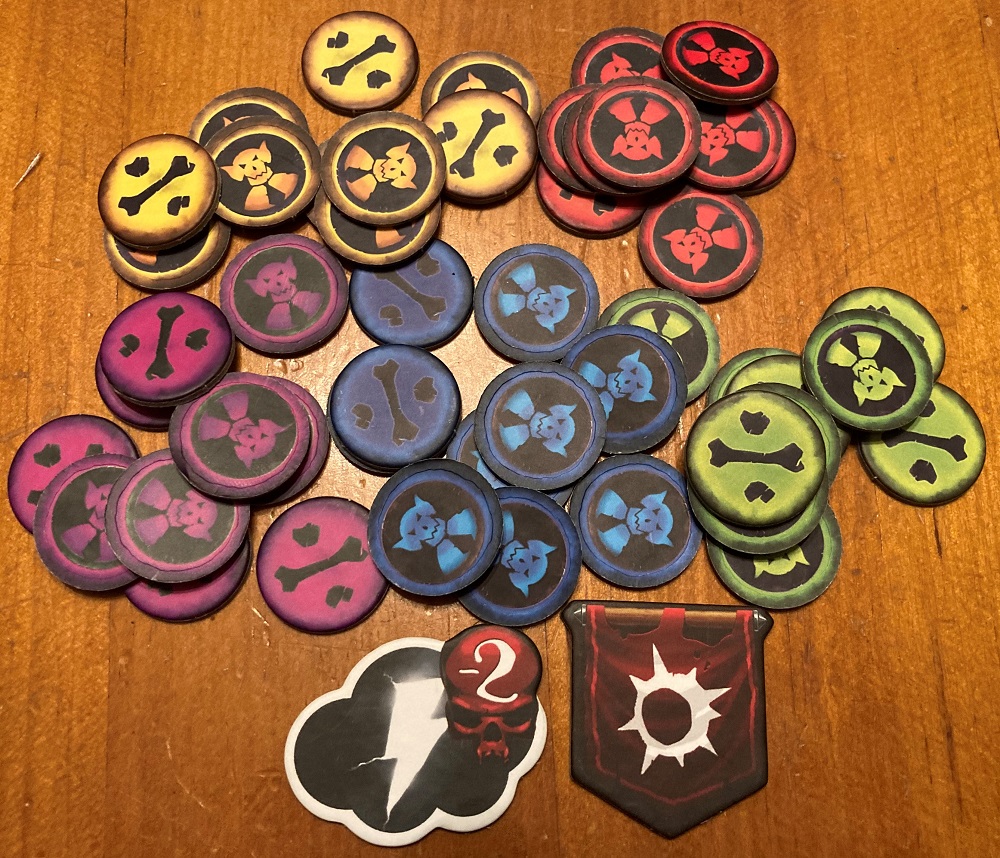
Tokens represent companies and startups. The activity token shows which industry sector is currently active while the crisis token overrides a sector’s revenue or loss.
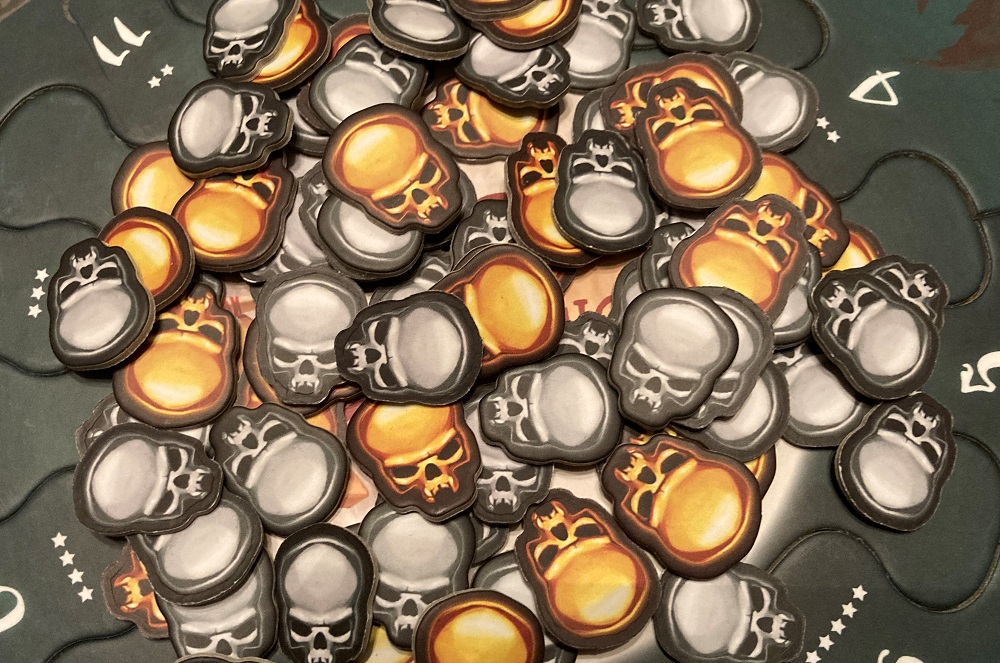
Skulls tokens are the currency in the game. 4 silver skulls = 1 gold skull.
How to Play Orconomics
You can download a copy of the rulebook here.
The Goal
The goal of the game is to be the first player to gain 11 victory points.
Setup
Players roll the dice to decide who will be the first player who assumes the role of the Oracle for the starting turn. Now assemble the game board by arranging the 10 industry sectors in random order around the central section. Each player then chooses a color and takes all of the 10 company tokens in that color. All of the skulls are piled up in the center section of the game board. Each player takes 5 gold skulls. The player to the right of the Oracle also takes a silver skull, the next player takes two silver skulls, the fourth player takes three skiver skulls and a fifth player gets four silver skulls.
Shuffle the deck of quest cards and place it face down. Draw the top three cards and lay them next to the deck. Now shuffle the deck of industry cards and deal each player three of these cards. Place the remaining cards in the deck next to the game board. Roll the two forecast dice and place the crisis token over the revenue/loss figure on the industry sector whose number matches the dice total. Now each player, beginning with the Oracle, places a company token in the company area of any industry of their choice. Then in the same order, players place a second company token. The maximum number of company tokens per industry is equal to the number of players plus one. You are now ready to start playing Orconomics.

Gameplay
Play is divided into turns with each player taking a turn starting with the Oracle. Turns consist of three stages with a start and end of turn as well.
Start of Turn
The current player is considered the Oracle. At the start of the turn, the Oracle must pay interest on their loans. For each company they have taken out a loan on, they must pay one silver skull. They can also remove these companies from the gameboard instead of paying interest. Next the Oracle rolls the forecast dice and places the the activity token on the industry with a number matching the roll. If the roll is the same as the industry where the activity token is currently located, the poorest player is awarded a gold skull, the crisis token is moved to the next industry sector in a clockwise direction, and then the dice are rolled again. These steps repeat until a new industry sector is rolled. Once a new industry sector is activated, then all startups located along the borderlines of that sector are moved one base down towards becoming a company.
Stage 1: Revenues and Losses
This stage involves the active industry sector as well as the adjacent sectors to either side. Players receive the revenue or pay the loss shown on these sectors for each company they have in those sectors. They do not do this for startups. During this time, players may also take out loans by flipping a company token, not startups, to its bones side, and then collecting a gold skull for each loan they take out. Loans are never paid off with the exception of the ability of the Tourism industry. Companies used for loans still qualify for revenues or losses and also count as victory points. They just cost the owner one silver skull each at the start of the turn in which they are the Oracle.
Stage 2: The Auction
After all players have had a chance to take out loans, the auction begins. If the active industry sector already contains the maximum number of companies, skip to the next stage. Otherwise, beginning with the Oracle, players may make a bid in gold skulls or pass. If a player passes, they are out of this auction for good. Once all the other players have passed, the player with the highest bid pays the amount in gold skulls and can then place a company token on the active industry. Industry cards that match the active industry sector can also be used to pay the cost at a rate of one card per gold skull.
Stage 3: Development
The Oracle can now play the industry cards in their hand. An industry card can be used to create a startup in the industry sector shown on the card or to promote a startup for that sector. The ability on the industry card can also be used. It costs one card to activate an ability if it matches the active industry. Otherwise, you need two matching cards of another industry to activate that industry’s ability. Played cards go into the discard pile.
When playing a startup with an industry card, you can place one of your company tokens along either border of the industry on the card. Each border has three slots denoted by red marks. A company token for a new startup is placed at the top of the border. If it is prompted, it moves one mark down. When promoted from the bottom mark, it can then be placed in a company area for either industry sector it borders as long as their is room. If a new startup is placed over another player’s startup on the first mark, the other token is returned to its player. If a token is promoted and moves onto a space with another player’s company token, the two tokens change spaces, essentially moving the other token back towards the starting position.
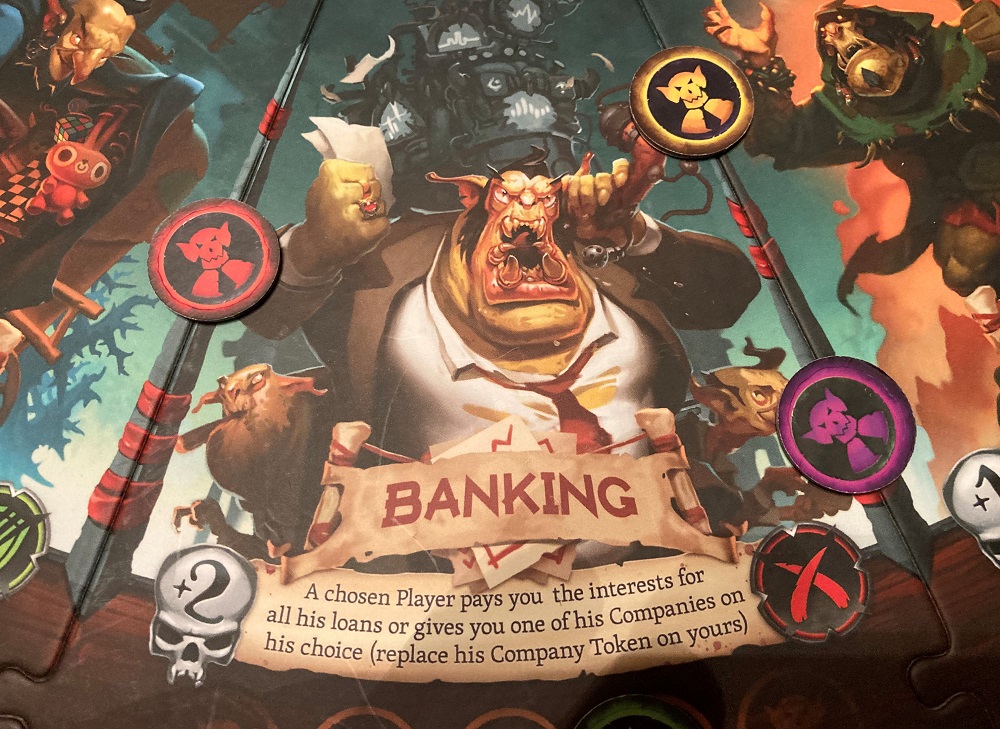
Completing the Turn
The Oracle can purchase two new industry cards for the cost of one gold skull. They can only do this once per turn. If a player has more than 5 industry cards in their hand at the end of their turn, they must discard down to 5. Finally, the two forecast dice and the oracle token are passed to the next player and the process starts over again.
In addition to the actions mentioned above, players can remove company tokens from the gameboard at any time, whether they are in the startup or company areas. They do not have to pay back loans to do this either. Also, as soon as a player meets the requirements of a quest card, they can claim it. Then another quest card is drawn from the deck so there are always three available. If two players complete a quest at the same time, neither gets it and the quest card is discarded and a new one put into play.
Game End
The game ends when a player reaches 11 victory points. Players earn 1 victory point for each quest completed and 1 victory point for each company owned.
Why You Should Play Orconomics
The best way to learn to play Ocronomics is to actually play it. After reading the rules, I was a bit confused about some things. However, after setting up a game and playing through a few turns, it all began to make sense. This is mainly because this game is a bit different from other games, and that is a good thing. The gameplay keeps everyone engaged. During most stages, all players are collecting or paying skulls or bidding in the auction. In addition, there are a lot of ways to get into position to win with 11 victory points. Since everyone starts with two companies, you only really need to get 9 more victory points. Quests are a great way to do this. Some are not too difficult to get and since you can see the quests at the start, you can place your first two companies to help you earn one of those quest cards fairly quickly. Auctions are a good way to get companies on the game board; however, this can be costly. That is where startups come into play. They just cost an industry card to play and they are promoted whenever an adjacent sector becomes active or you play more industry cards on them. This is not the only useful purpose of industry cards. The industry abilities can be very powerful. Some let you discharge all your loans and flip the company tokens back to their original side. Others let you promote all of your startups or draw 3 industry cards for free. One even lets you take out a loan for another player’s company. Due to the strategy involved in this game, I would suggest this game is more appropriate for children in their teens rather than the suggested 10 years old.
I really enjoyed playing Orconomics. I always like playing something different and this game fits the bill. There are a lot of decisions that can be made. Industry cards are very powerful. The fact that you have to purchase them rather than just drawing them every turn helps balance them in the game. It is important to pay attention to what other players are doing as well since you can then try to thwart their efforts during your turn. As a result, there are several strategies one can follow to victory. The key is being flexible and taking advantage of active industry sectors. Looking for combos is also a great strategy. For example, if you know you can play the Tourism ability to discharge your loans at the end of your turn, then why not take out loans on all your companies before the auction and rake in the gold skulls. In conclusion, I am very impressed with not only the gameplay, but also the quality of the components. The art on the game board and the cards is fun and very orcish, and the theme really fits the gameplay. I recommend Orconomics for those who enjoy a unique combination of mechanics and a fun theme mixed with some strategy and an element of ‘take that’.
For more information or to make a pledge, visit the Orconomics Kickstarter page!
Click here to see all our tabletop game reviews.
![]() To subscribe to GeekDad’s tabletop gaming coverage, please copy this link and add it to your RSS reader.
To subscribe to GeekDad’s tabletop gaming coverage, please copy this link and add it to your RSS reader.
Disclosure: GeekDad received a copy of this game for review purposes.



